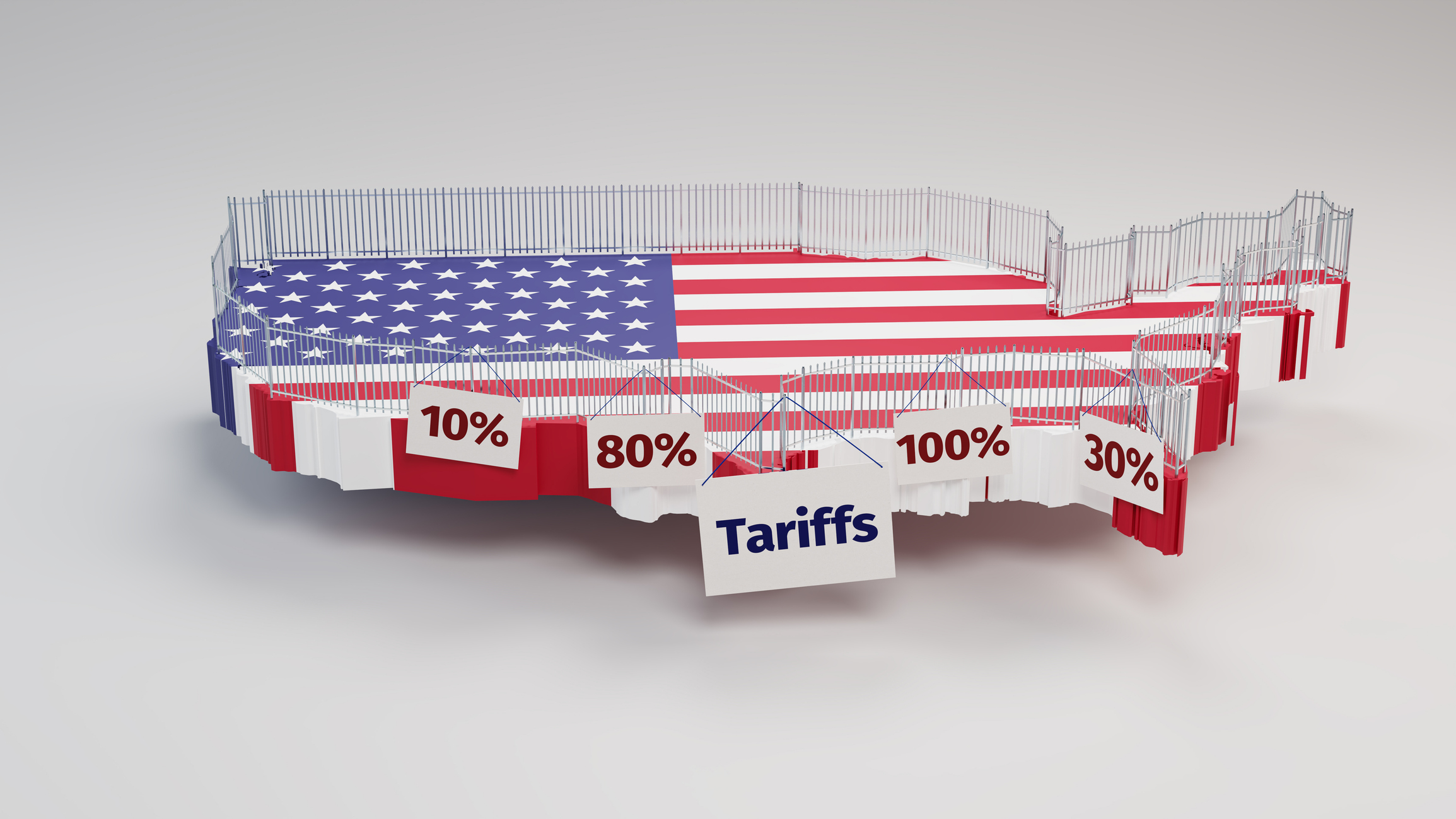Key Tax Provisions That Are Expiring After 2025
Unless Congress decides to act, lots of tax changes will take effect in 2026, including higher tax rates and lower standard deductions.

Getting the right tax advice and tips is vital in the complex tax world we live in. The Kiplinger Tax Letter helps you stay right on the money with the latest news and forecasts, with insight from our highly experienced team (Get a free issue of The Kiplinger Tax Letter or subscribe). You can only get the full array of advice by subscribing to the Tax Letter, but we will regularly feature snippets from it online, and here is one of those samples…
Big tax changes are likely coming in 2026. The culprit is the 2017 tax reform law. Most individual tax provisions were temporary. They expire after 2025. Unless extended by Congress, the provisions will revert automatically on January 1, 2026, to the rules in effect for 2017. We will look at key expiring provisions.
- Tax brackets: The individual income tax rates of 10%, 12%, 22%, 24%, 32%, 35% and 37% will return to 10%, 15%, 25%, 28%, 33%, 35% and 39.6%, with different income-level break points than now.
- Bigger standard deductions: The 2017 law more than doubled these breaks.
- Higher child tax credits: Before 2018, it was $1,000. Now, it’s $2,000. Plus the $500 credit for each dependent who is not a qualifying child.
- Alternative minimum tax: The higher exemption amounts and phaseout zones after 2017 have resulted in far fewer individual taxpayers having to pay the AMT.
- The 20% qualified business income deduction for self-employed people and people who own interests in S corps, partnerships, LLCs and other pass-through entities.
- The adjusted-gross-income (AGI) limitation on cash donations to qualified charities was increased from 50% to 60% under the 2017 tax legislation, helping big donors.
- The larger lifetime estate and gift tax exemption. People who die this year have a $13,610,000 exemption. Compare this with $5,490,000 for 2017 deaths.
- The cutback on high itemizations for upper-income taxpayers would return.
Restrictions on popular deductions also end after 2025. Among them:

Sign up for Kiplinger’s Free E-Newsletters
Profit and prosper with the best of expert advice on investing, taxes, retirement, personal finance and more - straight to your e-mail.
Profit and prosper with the best of expert advice - straight to your e-mail.
- Personal exemptions: In 2017, filers could take a deduction of $4,050 for themselves and each of their dependents. For example, a family of three claimed a $12,150 personal exemption deduction. The 2017 law eliminated this.
- The $10,000 cap on deducting state and local taxes on Schedule A of the 1040: This would be welcome relief for folks paying high property tax and/or state income tax.
- The curbs on deducting home mortgage interest: Under the 2017 law, interest can be deducted on up to $750,000 of home acquisition debt down from $1 million.
- Miscellaneous deductions on Schedule A, subject to the 2%-of-AGI threshold. The 2017 law eliminated this category of itemized deductions through 2025. This includes unreimbursed employee expenses (travel, meals, education, etc.), brokerage and IRA fees, hobby expenses, and tax return preparation fees.
- Theft and casualty losses: Under current law, only casualty losses arising in a federally declared disaster area can be deducted on Schedule A.
- Job-related moving expenses: Now, only members of the military get the break.
2025 is also the last year for two tax breaks not in the 2017 law: The expansion of the Obamacare health premium credit to more individuals who buy insurance through a marketplace. And, most student loan debt forgiven from 2021 through 2025 is exempt from federal income tax, which is an exception to the general rule that income from the cancellation of indebtedness is taxable.
This first appeared in The Kiplinger Tax Letter. It helps you navigate the complex world of tax by keeping you up-to-date on new and pending changes in tax laws, providing tips to lower your business and personal taxes, and forecasting what the White House and Congress might do with taxes. Get a free issue of The Kiplinger Tax Letter or subscribe.
Get Kiplinger Today newsletter — free
Profit and prosper with the best of Kiplinger's advice on investing, taxes, retirement, personal finance and much more. Delivered daily. Enter your email in the box and click Sign Me Up.

Joy is an experienced CPA and tax attorney with an L.L.M. in Taxation from New York University School of Law. After many years working for big law and accounting firms, Joy saw the light and now puts her education, legal experience and in-depth knowledge of federal tax law to use writing for Kiplinger. She writes and edits The Kiplinger Tax Letter and contributes federal tax and retirement stories to kiplinger.com and Kiplinger’s Retirement Report. Her articles have been picked up by the Washington Post and other media outlets. Joy has also appeared as a tax expert in newspapers, on television and on radio discussing federal tax developments.
-
 6 Stunning Waterfront Homes for Sale Around the US
6 Stunning Waterfront Homes for Sale Around the USFrom private peninsulas to lakes, bayous and beyond, Kiplinger's "Listed" series brings you another selection of dream homes for sale on the waterfront.
By Charlotte Gorbold Published
-
 Six Reasons to Disinherit Someone and How to Do It
Six Reasons to Disinherit Someone and How to Do ItWhether you're navigating a second marriage, dealing with an estranged relative or leaving your assets to charity, there are reasons to disinherit someone. Here's how.
By Donna LeValley Published
-
 Ask the Editor: Taxes, April 11, 2025
Ask the Editor: Taxes, April 11, 2025Ask the Editor In our Ask the Editor series, Joy Taylor, The Kiplinger Tax Letter Editor, answers questions related to IRAs and other retirement accounts.
By Joy Taylor Published
-
 Trump's Sweeping New Tariffs Rattle Wall Street, Main Street
Trump's Sweeping New Tariffs Rattle Wall Street, Main StreetThe Kiplinger Letter Trump is promising that the short-term pain of steep new tariffs on imports will spark a manufacturing renaissance. But they pose major risks in the near term.
By Jim Patterson Published
-
 Ask the Editor: Taxes, April 4, 2025
Ask the Editor: Taxes, April 4, 2025Ask the Editor In our new Ask the Editor series, The Kiplinger Tax Letter Editor answers questions related to the tax bill that Congress and the Trump admin are working on.
By Joy Taylor Published
-
 Congressional Republicans Tackle Trump's Agenda
Congressional Republicans Tackle Trump's AgendaThe Kiplinger Letter Despite slim majorities in both chambers, the GOP is gearing up to overhaul taxes, border security and more.
By Sean Lengell Published
-
 Ask the Editor: Taxes, March 28, 2025
Ask the Editor: Taxes, March 28, 2025Ask the Editor In our new Ask the Editor series, Joy Taylor, The Kiplinger Tax Letter Editor, answers questions related to filing of tax returns and paying taxes.
By Joy Taylor Published
-
 What DOGE is Doing Now
What DOGE is Doing NowThe Kiplinger Letter As Musk's DOGE pursues its ambitious agenda, uncertainty and legal challenges are mounting — causing frustration for Trump.
By Matthew Housiaux Published
-
 A Move Away From Free Trade
A Move Away From Free TradeThe Letter President Trump says long-term gain will be worth short-term pain, but the pain could be significant this year.
By David Payne Published
-
 Expiring Business Tax Breaks And Trump's Tax Plan
Expiring Business Tax Breaks And Trump's Tax PlanThe Tax Letter Four important business tax breaks are likely to be a part of President Trump's tax plan. We'll break them down for you.
By Joy Taylor Published